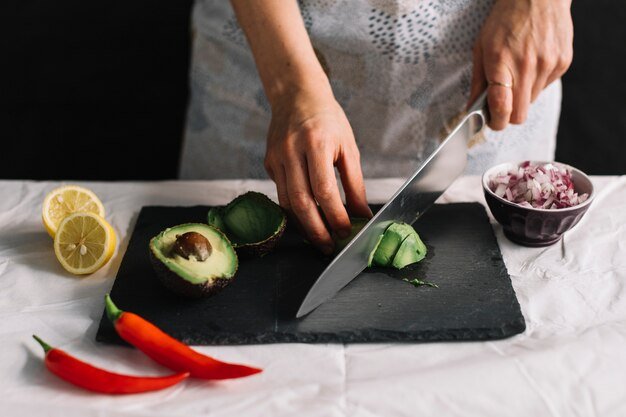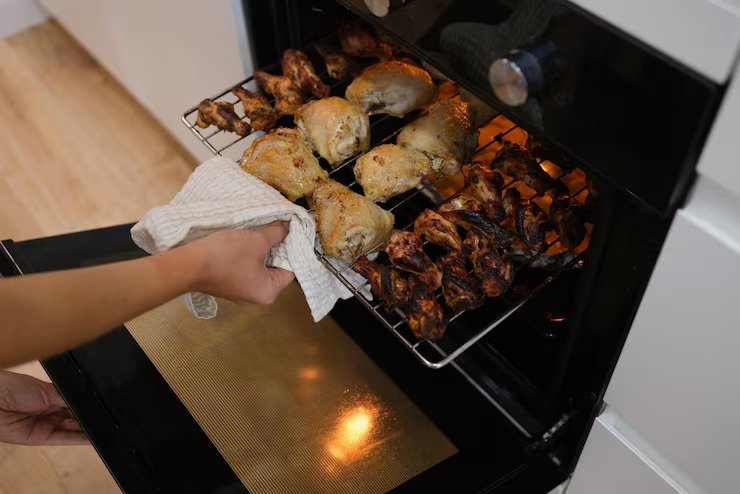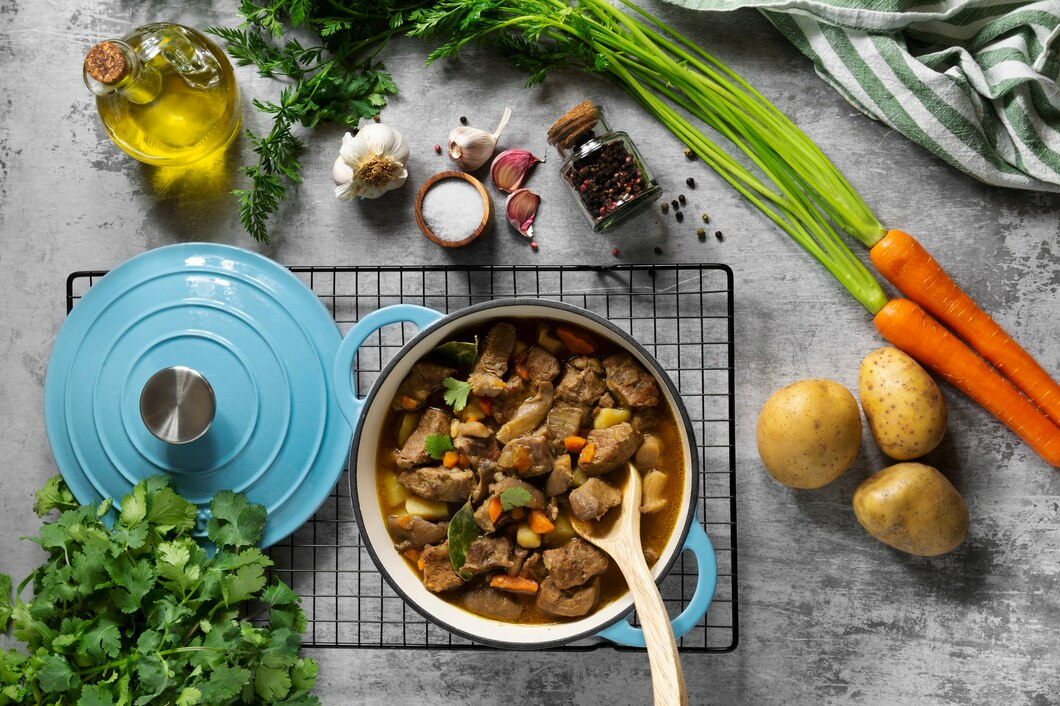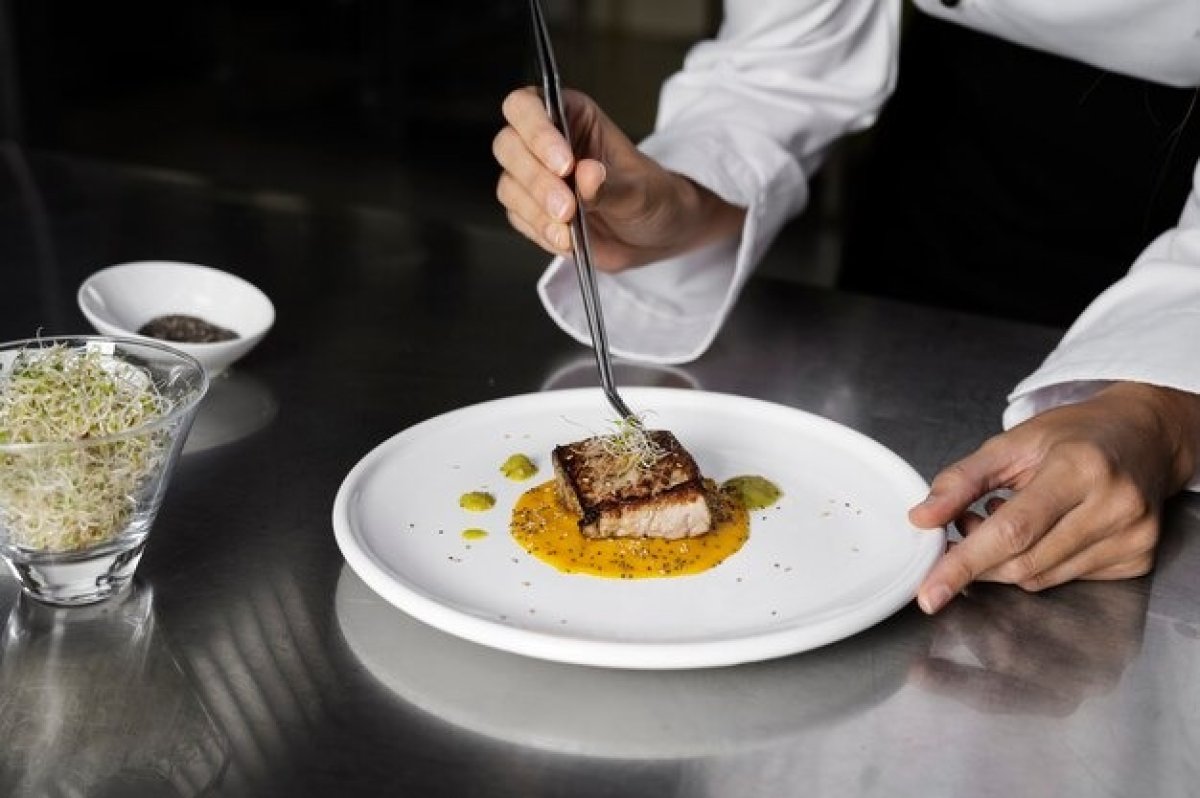A legacy of innovation, quality, and culinary experience.
Read our NewsletterMaster essential cooking techniques every chef should know to elevate their culinary skills, from knife skills to plating for delicious and visually stunning dishes.
Whether you're an aspiring chef or a seasoned professional, mastering the foundational cooking techniques is crucial to achieving culinary excellence. From the basic knife skills to the delicate art of plating, each method plays a pivotal role in preparing dishes that not only taste amazing but also look visually appealing. In this blog, we’ll explore the essential cooking techniques every chef should know to elevate their culinary expertise.
One of the most important skills any professional chef can possess is mastery of the knife. A sharp knife and proper technique can make the difference between an efficient kitchen and a chaotic one. Knife skills are fundamental to preparing ingredients quickly, consistently, and safely.

Chopping: This involves cutting ingredients into uniform pieces. It's essential for even cooking and presentation.
Mincing: Finely chopping herbs, garlic, or other aromatics, ensuring a consistent texture and flavor release.
Julienne: Cutting vegetables into thin matchstick-like strips, commonly used in salads and garnishes.
Brunoise: A very fine dice, often used for vegetables like carrots and onions, which can be used for sauces or as garnishes.
Having these knife skills at your disposal will not only speed up your prep time but also help ensure consistency in every dish you create.
Sautéing is one of the fastest and most versatile cooking solutions, where food is cooked quickly in a pan with a small amount of fat. This technique works well for delicate proteins like fish and tender vegetables & fruits, preserving their texture and flavor. This technique works well for delicate proteins like fish and tender vegetables, preserving their texture and flavor.
Heat the pan: Use medium to high heat, allowing the oil or butter to shimmer but not smoke.
Add food: Once the oil is hot, add the ingredients. Don’t overcrowd the pan, as it can lower the temperature and cause food to steam rather than sauté.
Stir frequently: Ensure even cooking and browning by stirring or tossing the ingredients regularly.
Perfecting the art of sautéing allows chefs to produce dishes that are flavorful and full of texture.
Roasting and baking are techniques that involve cooking food in an oven with dry heat. While both involve the same basic principle, roasting is generally used for vegetables and meats, while baking is more commonly associated with pastries, bread, and cakes.

Typically involves higher temperatures (400-450°F) to caramelize the sugars in foods, giving them a deep, rich flavor.
It’s perfect for cooking large cuts of meat or root vegetables.
Low to moderate temperatures are used to cook food evenly, such as in the case of cakes, cookies, and breads.
The precise control of temperature ensures a consistent and delicate texture, especially in pastries.
Understanding the difference between these two techniques and how they influence the final dish is a fundamental skill in a chef’s repertoire.
Grilling and broiling are methods of cooking food with direct heat, producing a smoky, charred flavor and attractive grill marks. Though often used interchangeably, there is a subtle difference between the two. When grilling, particularly for BBQ, cooking food over an open flame adds a distinctive smoky flavor.
Cooking food over an open flame or hot coals, usually outdoors. Ideal for meats, vegetables, and fish, grilling adds a smoky flavor and allows fats to drip away.
Direct grilling (for smaller cuts) and indirect grilling (for larger cuts) are common techniques to control heat and cooking time.
Unlike grilling, broiling uses heat from above. It is typically done inside the oven under a broiler element.
Broiling is often used for smaller pieces of food, such as fish, steak, or vegetables.
Both techniques give food a distinctive flavor and texture, with the added benefit of being healthier options due to the reduced fat content.
Poaching, simmering, and boiling are moist-heat techniques used for cooking a variety of foods, from eggs to delicate fish.
Involves cooking food in gently simmering liquid at temperatures between 160-180°F. This method is perfect for cooking eggs, poultry, and fish.
The food is submerged in the liquid, which can be broth, wine, or water, and cooked slowly to retain moisture and flavor.
Simmering is done at a higher temperature than poaching (180-205°F), but below boiling. It’s ideal for stews, soups, and stocks.
It allows the ingredients to cook slowly, releasing flavors without losing moisture.
Boiling occurs at 212°F, ideal for cooking pasta spaghetti, potatoes, and vegetables. The high temperature helps cook foods quickly but requires careful attention to avoid overcooking.
The high temperature helps cook foods quickly but requires careful attention to avoid overcooking.
Each of these techniques imparts a different texture and flavor profile to food, making them essential tools for any chef’s toolkit.
Braising and stewing are both slow-cooking methods that use moist heat, but there are key differences in how they’re applied. These techniques are typically used for tougher cuts of meat or hearty vegetables.

The food is first browned in fat and then cooked in a small amount of liquid, covered, and slowly simmered. The technique allows tough cuts of meat like short ribs or pork shoulder to become tender and flavorful.
It’s a versatile method that can be done in a Dutch oven, slow cooker, or pressure cooker.
Similar to braising, but the food is usually cut into smaller pieces and fully submerged in liquid. Stews are cooked slowly, allowing the flavors to meld together.
This technique is often used for making hearty soups, stews, or chili.
Both methods allow flavors to develop deeply over time and yield tender, melt-in-your-mouth textures.
Sauce making is an art form in the culinary world. A well-crafted sauce can elevate a dish, adding complexity and depth. Mastering the key sauce-making techniques is a must for any chef.
Mother Sauces: These are the base sauces from which many others are derived, such as béchamel, velouté, espagnole, tomato sauce, and hollandaise.
Emulsification: This technique involves combining ingredients that normally don’t mix, such as oil and water. A classic example is mayonnaise or vinaigrette.
Creating and mastering sauces requires practice and a deep understanding of flavor balance and texture.
A beautifully plated dish can create a memorable dining experience, enhancing not only the flavor but the visual appeal of the meal. Plating is about arranging food artfully to engage the senses.

Balance: Ensure the colors, textures, and sizes of elements on the plate are balanced. The visual flow should guide the diner’s eye.
Height: Use height to create depth on the plate, such as stacking vegetables or proteins.
Portion Control: A well-plated dish should have a perfect balance of protein, starch, and vegetables, presented in a way that is not overcrowded.
Plating is as much about creativity as it is about functionality, and understanding how to highlight each element of a dish can set you apart as a professional chef.
Mastering these essential cooking techniques is key to becoming a proficient chef. Each technique has its own role in crafting dishes that are flavorful, texturally appealing, and visually stunning. Whether you're preparing a simple weeknight dinner or creating an elaborate tasting menu, these cooking solutions are your foundation for success in the kitchen. By continuously honing your skills, learning new methods, and experimenting with different ingredients, you can elevate your culinary craft and develop your unique cooking style.
Whether you’re preparing a simple weeknight dinner or creating an elaborate tasting menu, these fundamental cooking techniques are your foundation for success in the kitchen.